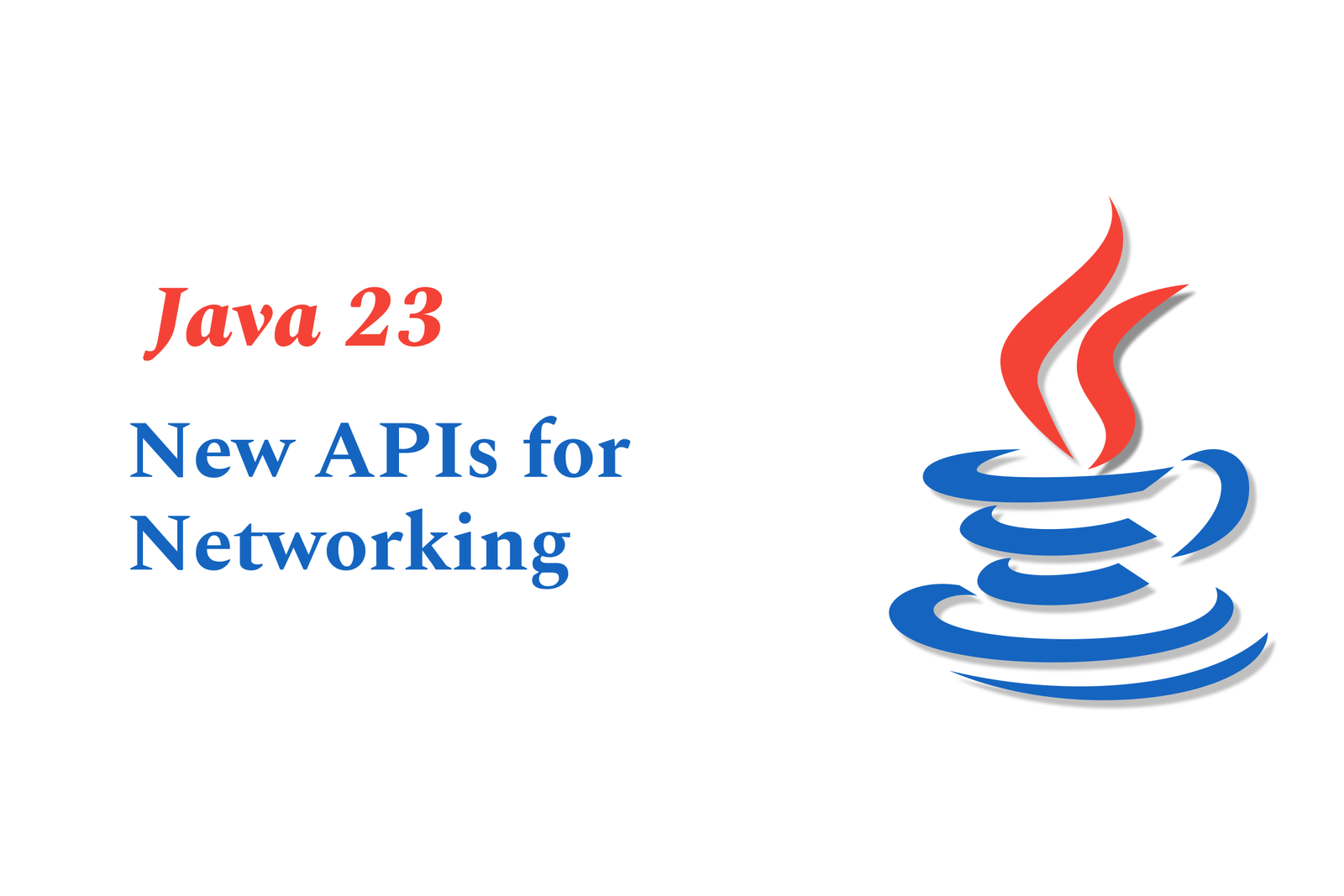Java 23 new APIs for networking
Java 23 introduces enhanced networking APIs that improve support for IPv6, simplify socket management, and modernize high-level access to web resources using updated URI, URL, and HTTP connection classes, enabling more secure and efficient network communication in Java applications.
Java 23 New APIs for Networking
1 ) Overview of java.net Package
The java.net package in Java 23 provides a comprehensive suite of classes to implement networking applications.
It is divided into two main sections:
Low Level API: Manages fundamental network abstractions like Addresses (IP addresses), Sockets (communication endpoints), and Interfaces (network interfaces).
High Level API: Manages resources through abstractions like URIs (Universal Resource Identifiers), URLs (Universal Resource Locators), and connections to these resources.
2 ) Addresses
The core abstraction for network addresses is the `InetAddress` class.
It supports both IPv4 (`Inet4Address`) and IPv6 (`Inet6Address`).
Java 23 continues to handle IPv6 transparently when supported but allows users to disable it via system properties if needed.
Special care is necessary as some networking functions may throw exceptions if IPv6 is not supported or disabled, especially when using `Inet6Address` objects.
3 ) Sockets
Java 23 supports four types of socket classes for network communication:
`Socket` for TCP client side communications.
`ServerSocket` for TCP server side connections to accept client connections.
`DatagramSocket` for UDP sent/receive operations.
`MulticastSocket` to handle multicast group communications (specialized UDP).
Communication via TCP sockets is performed through standard InputStreams and OutputStreams accessible on socket instances.
4 ) Network Interfaces
The `NetworkInterface` class allows querying and browsing all networking interfaces on the local machine, such as Ethernet or PPP connections.
It facilitates checking interface capabilities, including whether IPv6 is supported on a given interface.
Every implementation must provide at least one such interface, either connected to a network or loopback (local only communication).
5 ) High Level Networking API
Java 23’s high level API offers easier access to network resources:
`URI`: Represents a resource identifier per RFC 2396, focusing on identification rather than access.
`URL`: Represents resource locators allowing direct access.
`URLConnection`: Manages a connection to the resource indicated by a URL using dedicated protocol handlers (e.g., `http`, `https`).
`HttpURLConnection`: Provides HTTP protocol specialization but is superseded by newer HTTP Client APIs for advanced usage.
6 ) Recommended Usage
Use `URI` as the primary way to identify web resources.
Convert `URI` to `URL` if resource access is necessary.
Use `URLConnection` or higher level HTTP clients for effective communication protocols.
7 ) Java System Properties for Networking
Numerous system properties relevant to networking behavior exist, such as:
Proxy configuration (`http.proxyHost`, `https.proxyPort`, etc.)
Protocol handlers
Preferred IP stack selection (`java.net.preferIPv4Stack`, `java.net.preferIPv6Addresses`)
Authentication and redirect controls in HTTP
These properties provide fine grained control over networking operations in Java applications.
Summary:
Java 23 enhances and maintains a solid, flexible API for networking by continuing support for core abstractions like IP addresses, sockets, and network interfaces, alongside high level resource handling with URI, URL, and HTTP connections. The package offers comprehensive configurability through system properties, making it suitable for building robust network applications.
https://justacademy.in/news-detail/meta?s-big-push-for-react-native-in-2025
https://justacademy.in/news-detail/android-offline-mode-improvements
https://justacademy.in/news-detail/swiftui-and-uikit-integration-techniques-for-ios-19
https://justacademy.in/news-detail/dart-3.1-released:-enhancing-flutter-performance
https://justacademy.in/news-detail/swiftui-animations:-new-apis-explored
Related Posts
In 2025, top Angular libraries offer modern, feature-rich components and tools for building dynamic web apps. From powerful data grids to low-code platforms like UI Bakery, these libraries enhance development speed, UI design, and scalability, making them essential for Angular developers.
Migrating from AngularJS to Angular 17 involves gradually upgrading your app by running both frameworks together using tools like ngUpgrade, rewriting components in TypeScript, and adopting Angular’s modern architecture to enhance performance, maintainability, and long-term support.
Angular state management tools help organize and handle app data efficiently, improving scalability and maintainability. Popular options include NgRx for robust, RxJS-based patterns, and newer Signal Store solutions that offer simpler, reactive approaches integrated tightly with Angular’s latest features.
RxJS in Angular empowers developers to manage asynchronous data streams with powerful operators like `forkJoin`, `combineLatest`, and `zip`. Mastering these key operators in 2025 is essential for building efficient, reactive applications that handle complex event sequences seamlessly.
Angular performance optimization in 2025 focuses on improving app speed and responsiveness by using techniques like OnPush change detection, lazy loading, efficient data caching, and AOT compilation. These practices reduce load times, enhance user experience, and ensure scalable, fast Angular applications.
In 2025, Angular remains preferred for large-scale, enterprise apps with its robust, all-in-one framework, while Vue attracts developers seeking simplicity and fast development for smaller projects. Both frameworks excel, with choice driven by project needs and team expertise.
Angular Signals are a new reactive primitive in Angular 16 that enable fine-grained, efficient change detection by automatically tracking dependencies and updating only affected parts of the UI. They simplify state management and boost app performance, revolutionizing Angular's reactivity model.
Angular interview questions to prepare in 2025 focus on core concepts like components, directives, data binding, routing, and dependency injection, along with TypeScript mastery and latest Angular features to ensure strong practical knowledge for building scalable, efficient web applications.
AngularJS reached its official end of support in January 2022, meaning no further updates or security patches. To ensure app security and performance, developers should consider migrating to modern Angular versions or seek third-party long-term support options if immediate migration isn’t possible.
The Angular Roadmap 2025 highlights upcoming features focused on improving developer experience and performance, including zoneless Angular, Signals integration, enhanced Forms, async data handling, improved HMR, and expanded Angular Material/CDK enhancements, driving modern, efficient web app development.










